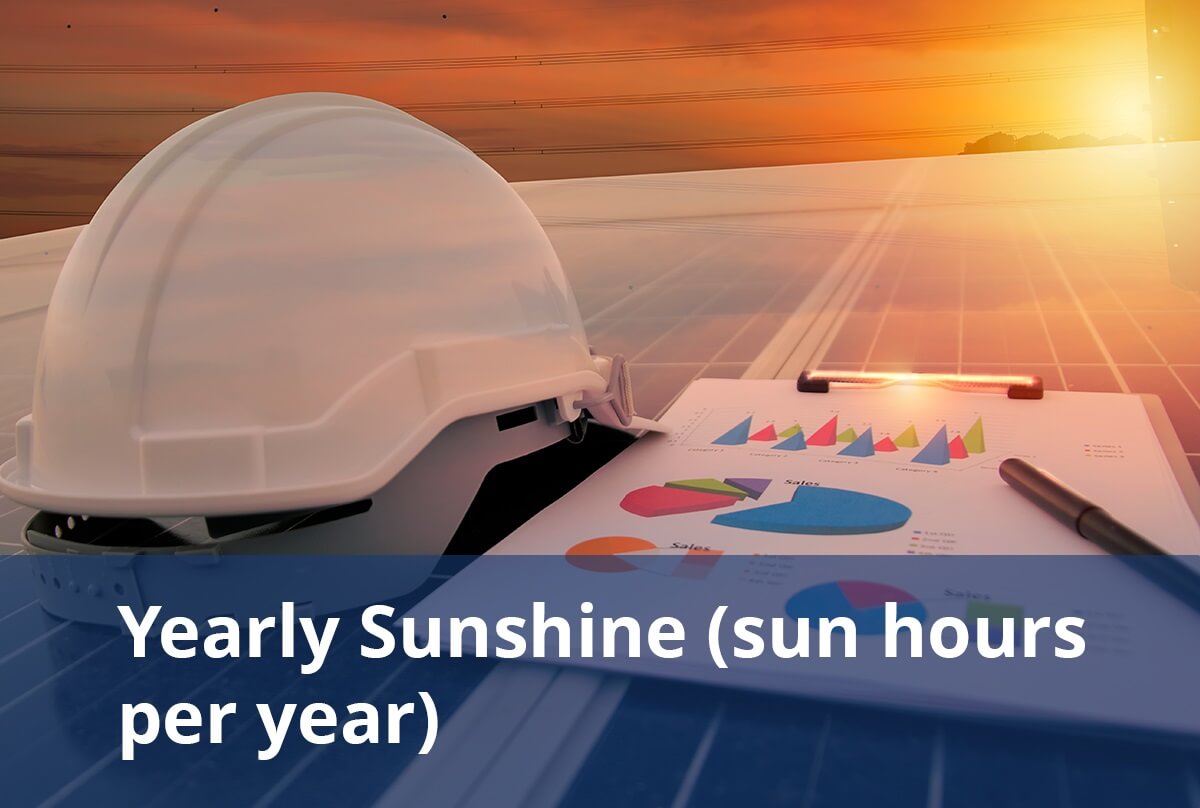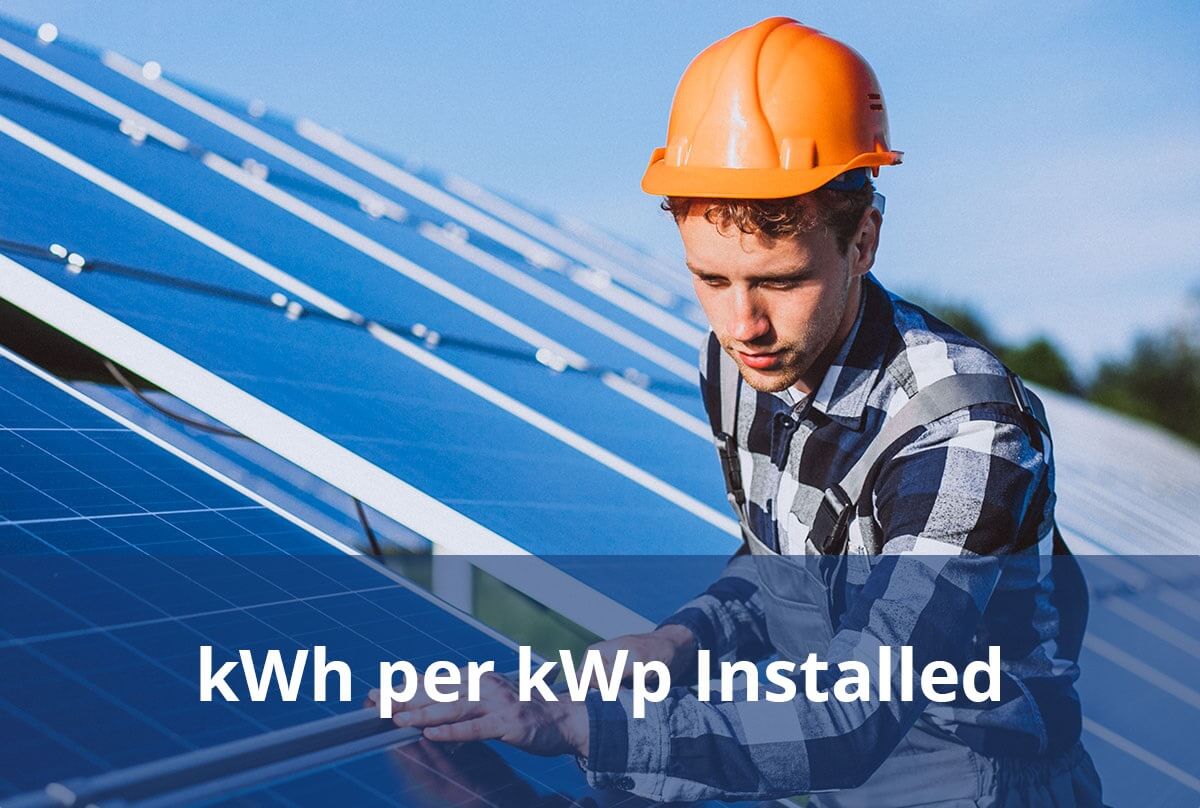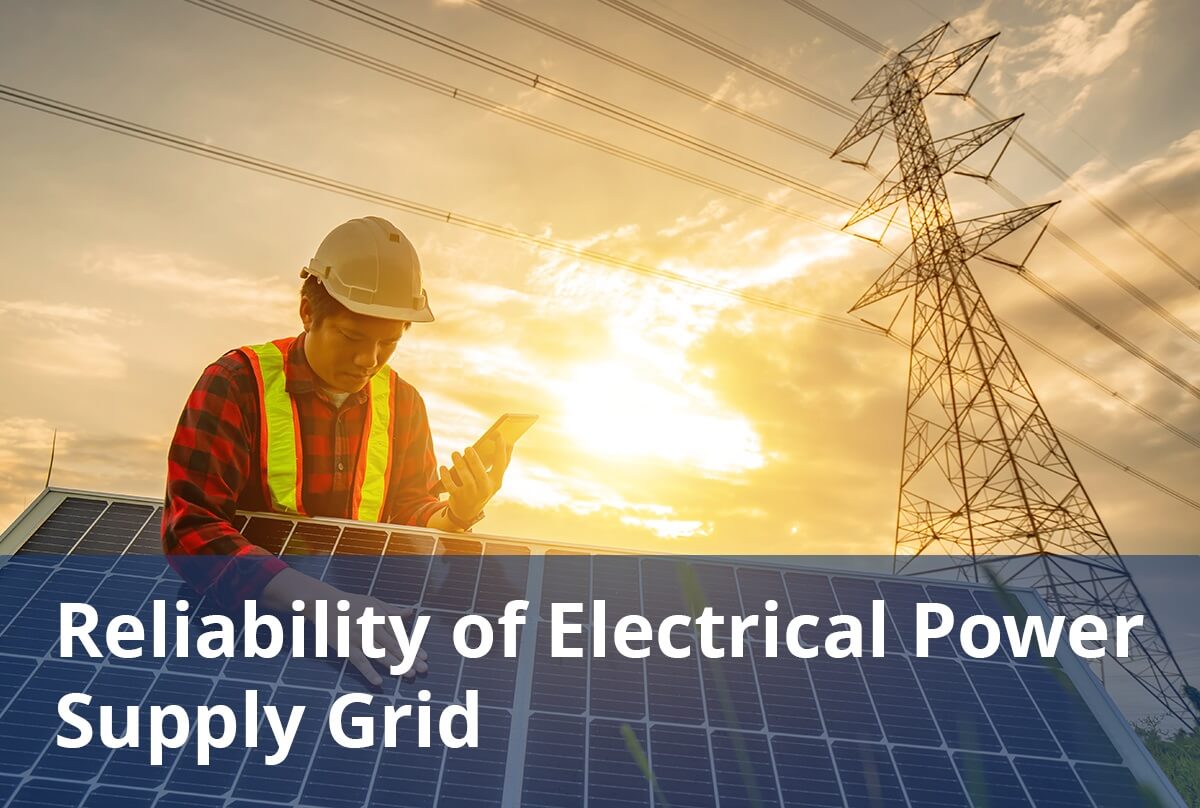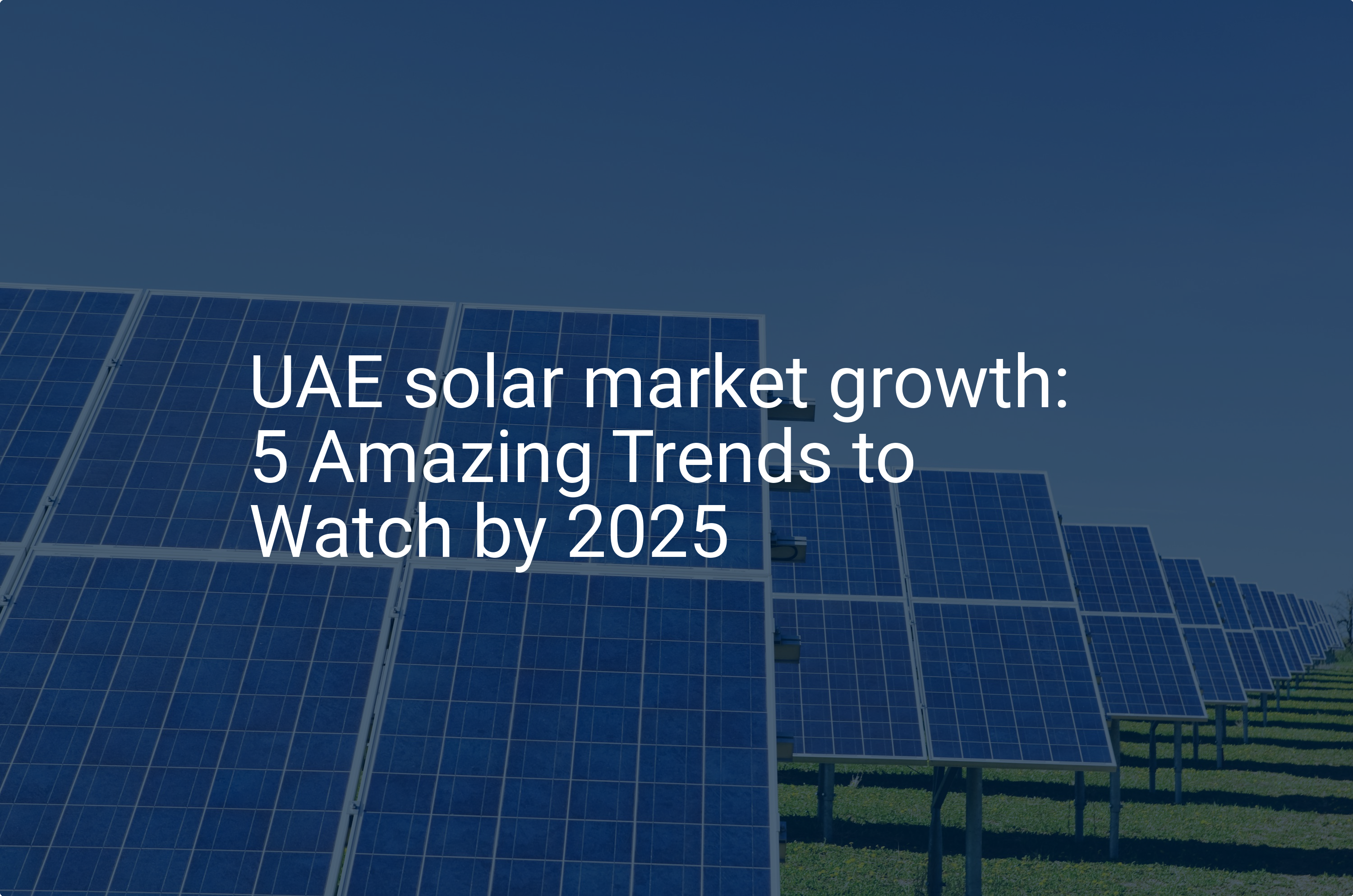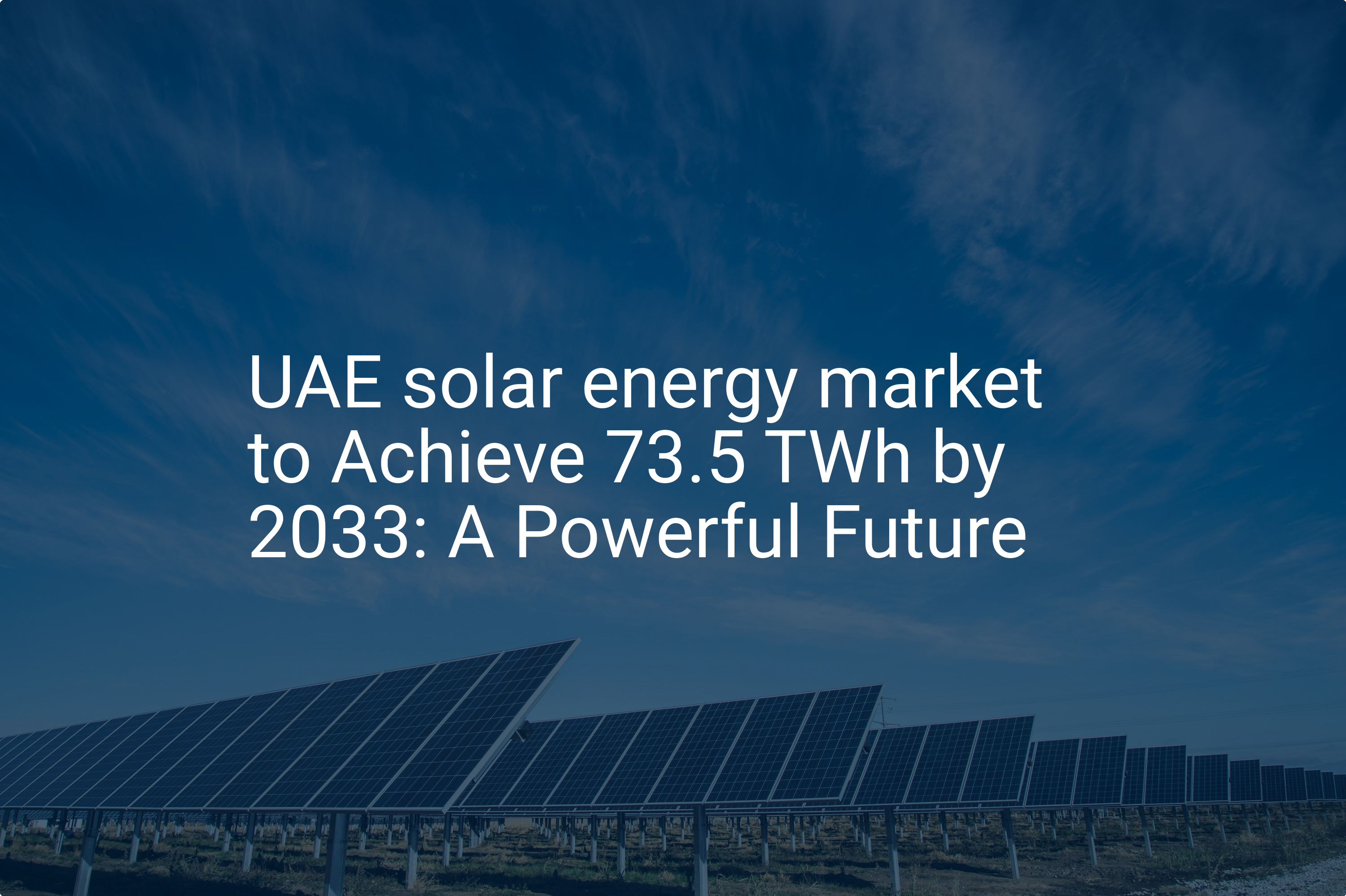Discover comprehensive insights into the statistics, market trends, and growth potential surrounding the solar panel manufacturing industry in United Arab Emirates (UAE)
- https://www.researchgate.net/publication/268711400_Global_and_Diffuse_Solar_radiation_in_The_United_Arab_Emirates, „Average Sun hours in UAE“ Retrieved on 25 June, 2024.
- https://iopscience.iop.org/article/10.1088/1755-1315/73/1/012012/pdf „Peak Sun hours in UAE“ Retrieved on 10 June, 2024.
- https://www.globalpetrolprices.com/United-Arab-Emirates/electricity_prices/, „Price of electricity in UAE“ Retrieved on 10 June 2024.
- https://www.dewa.gov.ae/-/media/Files/About-DEWA/Signed_Sustainability-Report_Eng_2023.ashx, „Reliability of UAE Electric Supply“ Retrieved on 11 June, 2024.
- https://mediaoffice.ae/en/news/2023/July/30-07/DEWA-Smart-Grid, „Customer Minutes Lost“, Retrieved on 11 June, 2024.
- https://www.mordorintelligence.com/industry-reports/united-arab-emirates-solar-energy-market, „UAE Solar Production“, Retrieved on 11 June, 2024.
- https://www.pv-magazine.com/2023/05/05/united-arab-emirates-solar-market/, „UAE Solar production in future“, Retrieved on 11 June, 2024.
- https://www.zawya.com/en/projects/utilities/dubais-dewa-drives-down-solar-costs-by-85-mjdhokte, „Cost of solar energy in UAE“, Retrieved on 11 June, 2024.
- https://world-nuclear.org/Information-Library/Country-Profiles/Countries-T-Z/United-Arab-Emirates,“ UAE energy contribution by different sources“, Retrieved on 11 June, 2024.
- https://www.statista.com/statistics/1140810/uae-energy-distribution-by-source/, „Energy production projection“, Retrieved on 11 June, 2024.
- https://www.dewa.gov.ae/en/about-us/media-publications/latest-news/2019/10/dewas-shams-dubai-connects-1354-buildings-totalling-125mw-of-power,“Residential Solar in UAE“, Retrieved on 11 June, 2024.
- https://u.ae/en/information-and-services/environment-and-energy/water-and-energy/types-of-energy-sources/solar-energy,“Shams Solar power plant “ Retrieved on 13 June, 2024.
- https://www.payscale.com/research/AE/Industry=Solar_Panel_Installation/Salary, „Monthly income detail“, Retrieved on 12 June, 2024.
- https://www.erieri.com/salary/job/solar-energy-systems-engineer/united-arab-emirates, „monthly income in solar industry“, Retrieved on 12 June, 2024.
- https://www.worldometers.info/world-population/united-arab-emirates-population/, „Population of UAE“, Retrieved on 10 June, 2024.
- www.propertyfinder.ae,“property rent“, Retrieved on 27 June, 2024.
- https://www.dewa.gov.ae/en/consumer/billing/slab-tariff, „Slab Tariff in UAE“ , Retrieved on 11 June, 2024.
- https://www.statista.com/outlook/fmo/insurances/non-life-insurances/property-insurance/united-arab-emirates#gross-written-premium,“ insurance of property“, Retrieved on 27 June, 2024.
- https://www.globaldata.com/store/report/uae-power-market-analysis/, „total electric power installed in UAE“, Retrieved on 13 June, 2024.
- https://www.dewa.gov.ae/en/, „DEWA official website“, Retrieved on 25 June, 2024.
- www.taqa.com , „TAQA official website, Retrieved on 25 June, 2024.
- https://sewa.gov.ae/en/, „official website“, Retrieved on 25 June, 2024.
- https://www.enec.gov.ae/,“ official website“, Retrieved on 25 June, 2024.
- https://www.transco.ae/, “ official website“, Retrieved on 25 June, 2024.
- https://www.ewec.ae/en/home, “ official website“, Retrieved on 25 June, 2024.
- https://www.acwapower.com/en/,“ official website“, Retrieved on 25 June, 2024.
- https://www.mordorintelligence.com/industry-reports/united-arab-emirates-smart-grid-market-industry,“Transmission and distribution of electricity in UAE“ Retrieved on 13 June, 2024.
- https://en.wikipedia.org/wiki/List_of_power_stations_in_the_United_Arab_Emirates, „Power Stations in UAE“, Retrieved on 13 June, 2024.
- https://www.power-technology.com/data-insights/top-five-thermal-power-plants-in-operation-in-the-uae/,“thermal power in UAE“ Retrieved on 13 June, 2024.
- https://masdar.ae/en/renewables/our-projects/uae-wind-program,“wind energy UAE“, Retrieved on 13 June, 2024.
- https://www.dewa.gov.ae/en/about-us/strategic-initiatives/hatta-project,“ hydro electric power plant in dubai“, Retrieved on 13 June, 2024.
- https://www.eia.gov/international/analysis/country/ARE,“energy imports in UAE“, Retrieved on 13 June, 2024.
- https://cms.law/en/int/expert-guides/cms-expert-guide-to-renewable-energy/united-arab-emirates, „certifications for solar panels“, Retrieved on 13 June, 2024.
- https://u.ae/en/about-the-uae/strategies-initiatives-and-awards/strategies-plans-and-visions/environment-and-energy/uae-energy-strategy-2050, „UAE Energy Strategy 2050“, Retrieved on 13 June, 2024.
- https://www.cleanmax.com/ae/uae-solar-energy-revolution-government-incentives-and-investments-in-renewable-energy.php,“Net metering policy“, Retrieved on 13 June, 2024.
- https://wam.ae/en/details/1395302632873,“MBRSIC“, Retrieved on 13 June, 2024.
- https://masdar.ae/en/renewables/our-projects/al-dhafra-solar-pv,“Aldharfa solar plant“, Retrieved on 13 June, 2024.
- https://masdar.ae/en/renewables/our-projects/masdar-city-solar-photovoltaic-plant, „masdar city solar plant“ Retrieved on 13 June, 2024.
- https://masdar.ae/en/renewables/our-projects/khazna-data-center-photovoltaic-plant,“khazna data center“, Retrieved on 19 June, 2024.
- https://www.meteocontrol.com/en/company/references/largest-rooftop-solar-project-in-the-uae-warner-bros-world , „official website“, Retrieved on 25 June, 2024.
- https://masdar.ae/en/renewables/our-projects/seaworld-solar-project,“sea world solar“, Retrieved on 19 June, 2024.
- https://www.power-technology.com/data-insights/top-5-solar-pv-plants-in-development-in-the-uae/, „projected solar programs“. Retrieved on 19 June, 2024.
- https://www.ewec.ae/en/power-plant/al-ajban-solar-pv,“Al-Ajban Soalr“, Retrieved on 19 June, 2024.
- https://www.power-technology.com/marketdata/power-plant-profile-taqa-kizad-solar-pv-park-united-arab-emirates/, „Taqa Kizad“ Retrieved on 19 June, 2024.
- www.masdar.ae, „masdar power plant“, Retrieved on 14 June,2024.
- https://sirajpower.com/, „Siraj power official website“, Retrieved on 14 June, 2024.
- https://www.enerwhere.com, „Enerwhere official website“, Retrieved on 14 June, 2024.
- https://www.yellowdoorenergy.com/,“ official website“, Retrieved on 14 June, 2024.
- https://www.alshirawisolar.com/,“ official website“, Retrieved on 14 June,2024.
- https://shamsalkhaleej.com/,“ official website“ Retrieved on 14 June, 2024.

